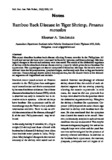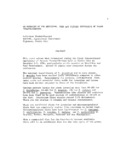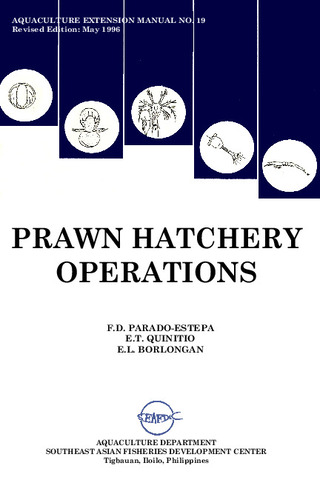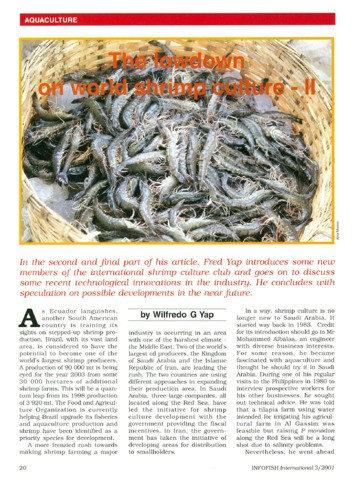Bamboo back disease in tiger shrimp, Penaeus monodon
Share
Abstract
This report describes bamboo back disease affecting Penaeus monodon in the Philippines. Affected and normal shrimps were processed for bacterial isolation and histopathology. Morphological changes in the external anatomy were also noted. The cuticle of the abdominal segments of shrimp with bamboo back disease do not overlap properly which gives them a bamboo-like appearance. The appendages are shorter compared with normal shrimps. No bacteria were recovered from the hepatopancreas, lymphoid organ, and hemolymph thus ruling out bacterial infection. Histopathology shows normal hepatopancreas, but the muscle fibers of the abdominal segments are fragmented and necrotic.
Suggested Citation
Tendencia, E. (2002). Bamboo back disease in tiger shrimp, Penaeus monodon. Bulletin of the European Association of Fish Pathologists , 22(3), 222-224. http://hdl.handle.net/10862/1535
Subject
Taxonomic term
Collections
- AQD Journal Articles [1248]
Except where otherwise noted, this item's license is described as http://creativecommons.org/licenses/by/2.5/scotland/
Related items
Showing items related by title, author, creator and subject.
-
An overview of the nutrition, feed and feeding techniques of prawn penaeid/shrimps
Piedad-Pascual, Felicitas (Philippine Council for Aquatic and Marine Research and Development, 1989)This paper echoes what transpired during the first International Conference of Penaeid Prawns/Shrimps held in Iloilo City in December 4-7, 1984, particularly on the Nutrition nd Feed Development. Around 25 papers were ... -
Prawn hatchery operations
Parado-Estepa, Fe D.; Quinitio, Emilia T.; Borlongan, Emeterio L. (Aquaculture Department, Southeast Asian Fisheries Development Center, 1996-05)The manual, an updated version of the 1984 SEAFDEC/AQD manual, presents the underlying principles and step-by-step instructions of prawn larval and post-larval rearing. The techniques described are not only applicable to ... -
The lowdown on world shrimp culture - II
Yap, Wilfredo G. (INFOFISH, 2001)This paper introduces some new members of the international shrimp culture club and goes on to discuss some recent technological innovations in the industry, particularly the polyculture of tilapia (mainly Oreochromis ...





